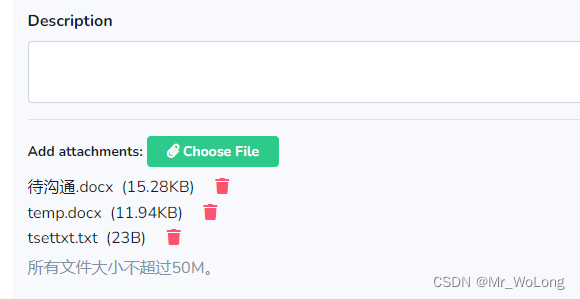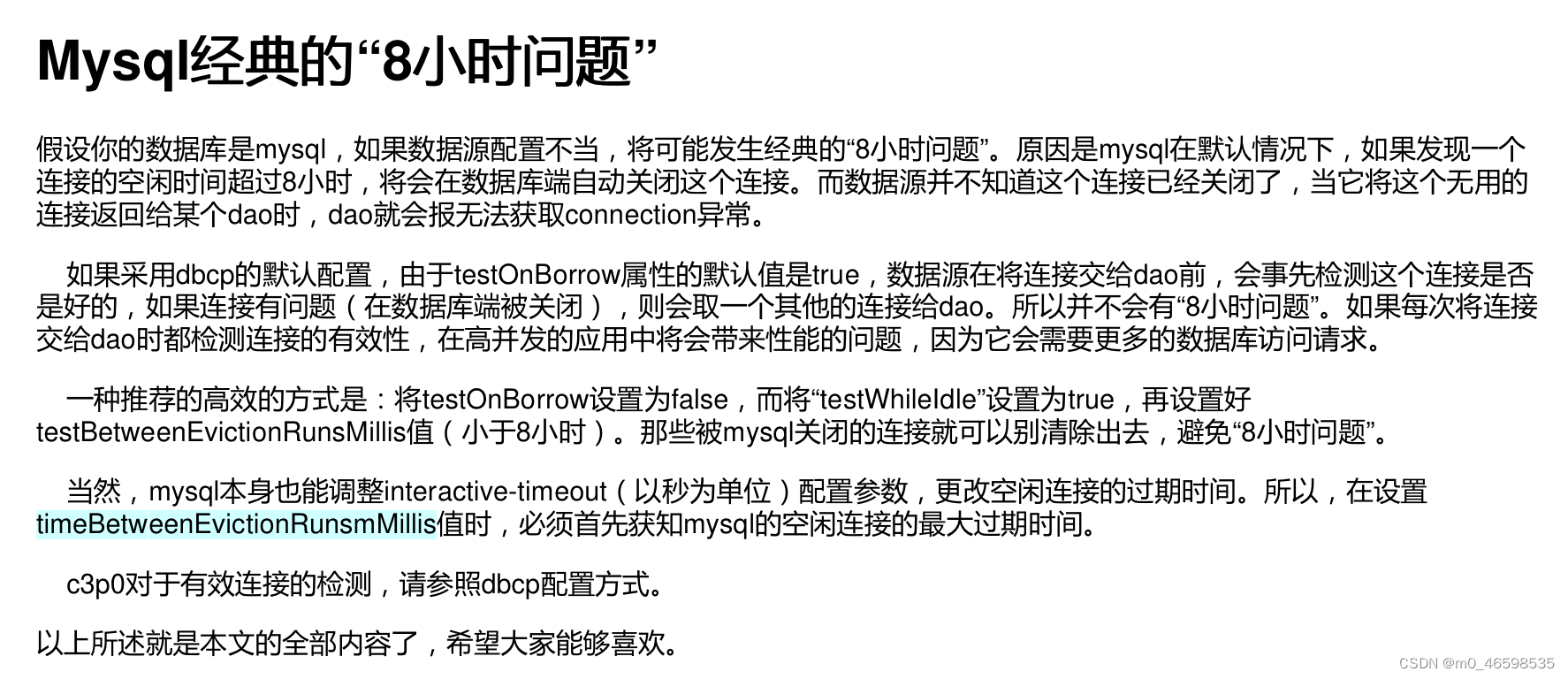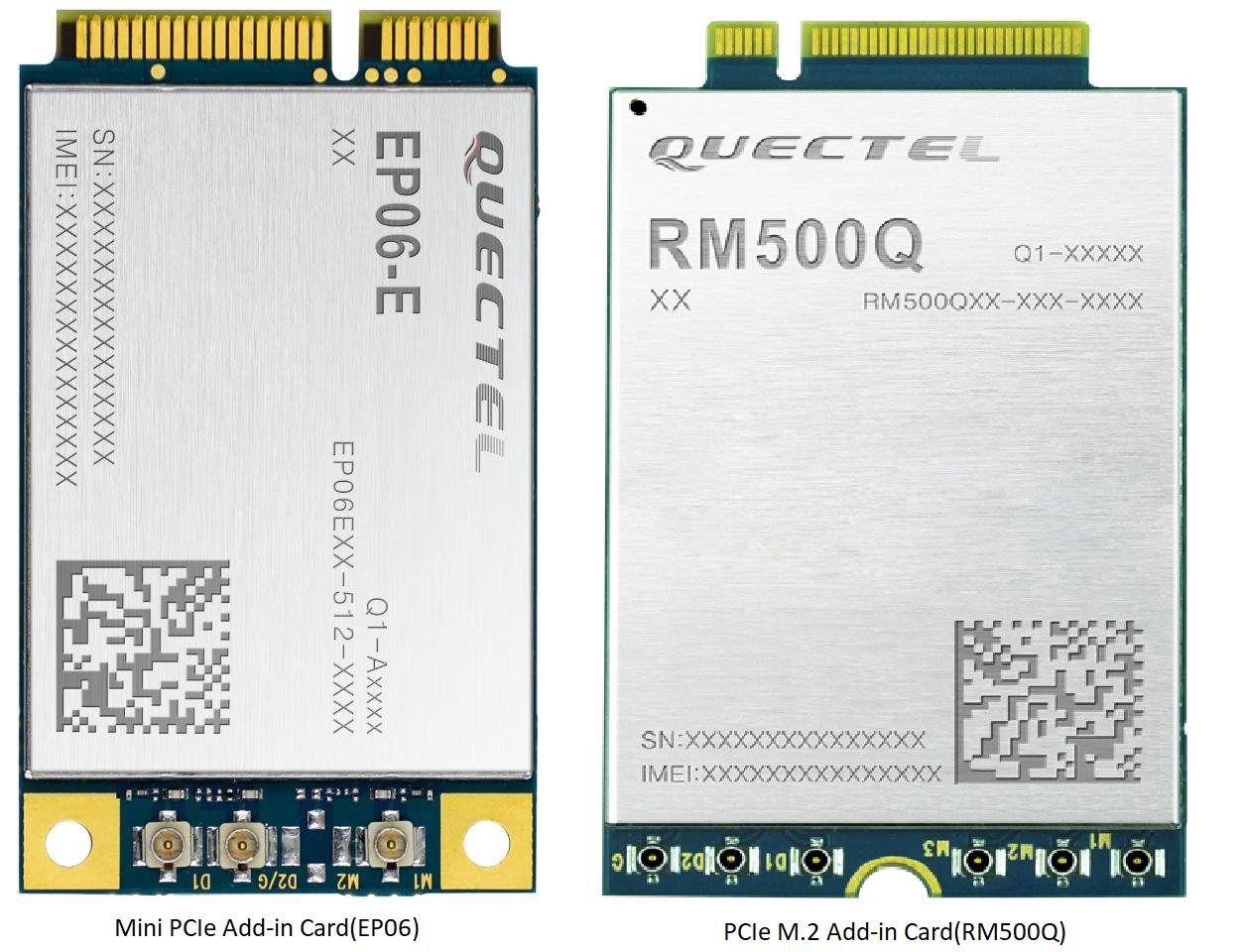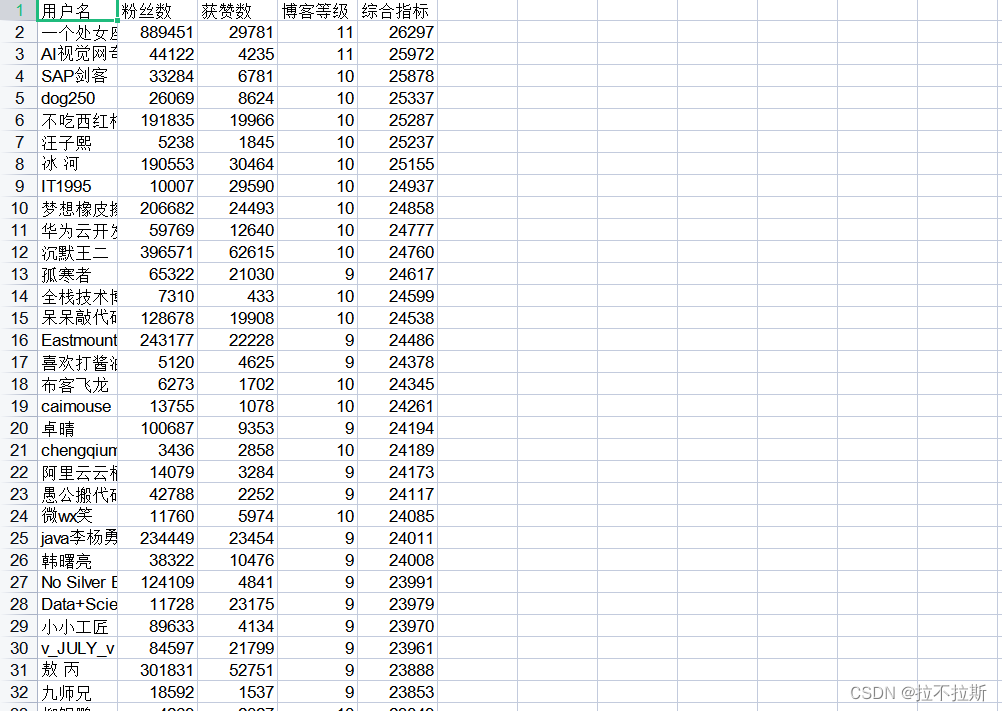文章目录
- 基本知识
- 快速搭建springBoot工程
- 起步依赖·原理分析
- spring-boot-starter-parent
- spring-boot-starter-web
- 配置
- yaml
- 数据格式
- 读取配置
- profile
- profile配置方式
- 多profile文件方式
- yml多文档方式
- profile激活方式
- 内部配置加载顺序
- 外部配置加载顺序
- 整合其他框架
- Junit
- redis
- mybatis
springBoot是快速构建spring的技术
基本知识
spring缺点:1. 配置繁琐 2. 依赖繁琐(导包的版本怎么确定)
SpringBoot功能
- 自动配置
- 起步依赖,简化依赖的配置
- 辅助功能 eg.嵌入式服务器、安全、指标
springBoot不是对Spring功能上的增强,而是提供了一种快速使用Spring的方式
官网文档地址:Spring Boot Reference Documentation
在创建项目时候,使用jar的方式打包
引导类是项目入口,运行main方法就可以启动项目
使用springboot和spring构建的项目,业务代码编写方式完全一样
快速搭建springBoot工程
搭建springBoot工程,定义HelloController.hello()方法,返回“Hello SpringBoot”
步骤① 创建Maven项目
步骤② 导入springBoot起步依赖
springboot工程需要继承的父工程:Inheriting the Starter Parent POM
<!-- springboot工程需要继承的父工程 -->
<parent>
<groupId>org.springframework.boot</groupId>
<artifactId>spring-boot-starter-parent</artifactId>
<version>3.0.1</version>
</parent>
<dependencies>
<dependency>
<!--web开发的起步依赖-->
<groupId>org.springframework.boot</groupId>
<artifactId>spring-boot-starter-web</artifactId>
</dependency>
</dependencies>
步骤③定义Controller
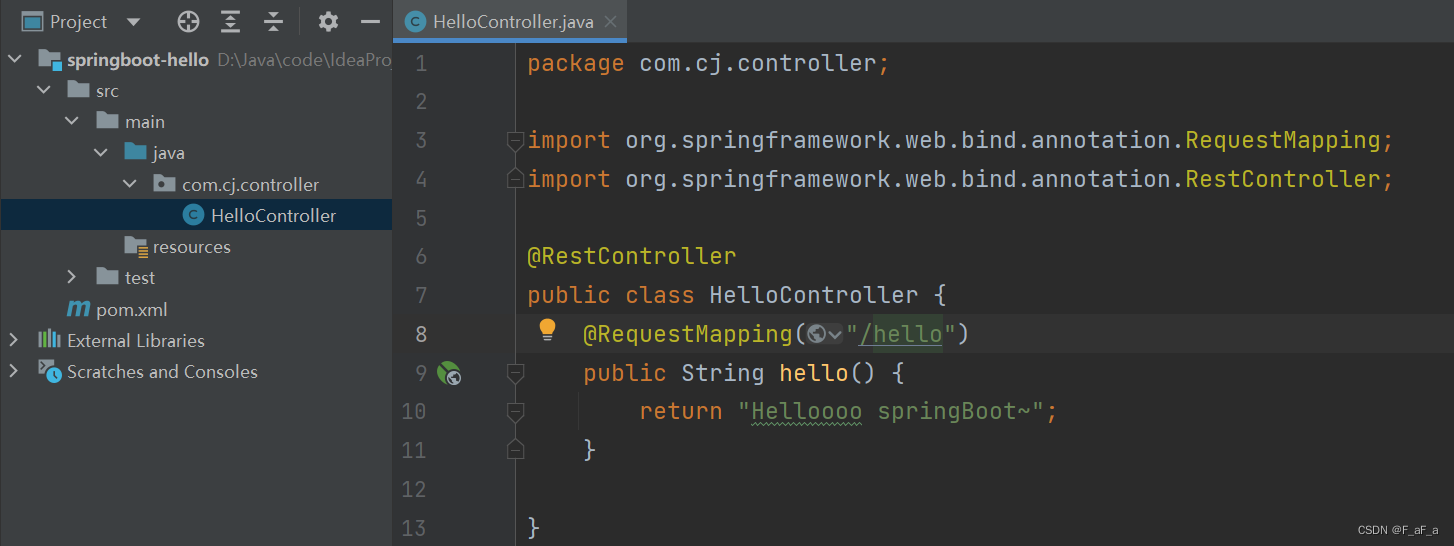
步骤④编写引导类
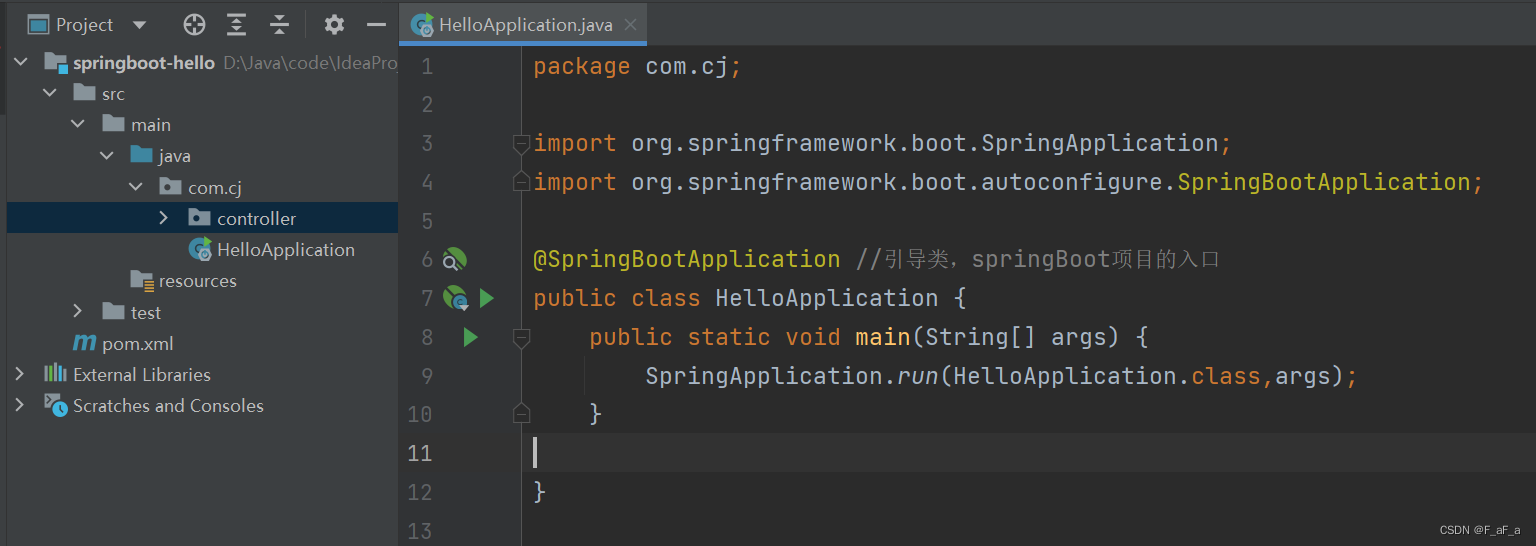
步骤⑤启动测试
运行后,显示在8080端口

浏览器访问http://localhost:8080/hello
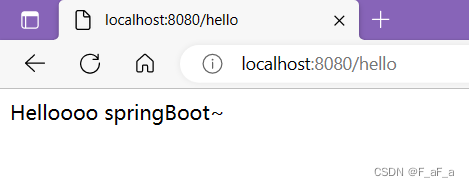
或者使用idea的快速构建即可代替上面的配置。
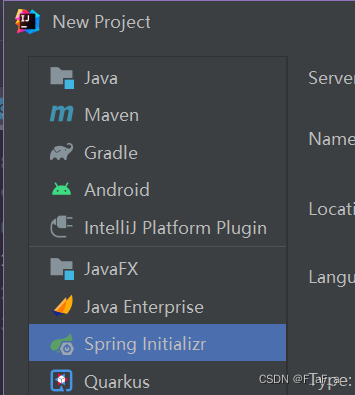
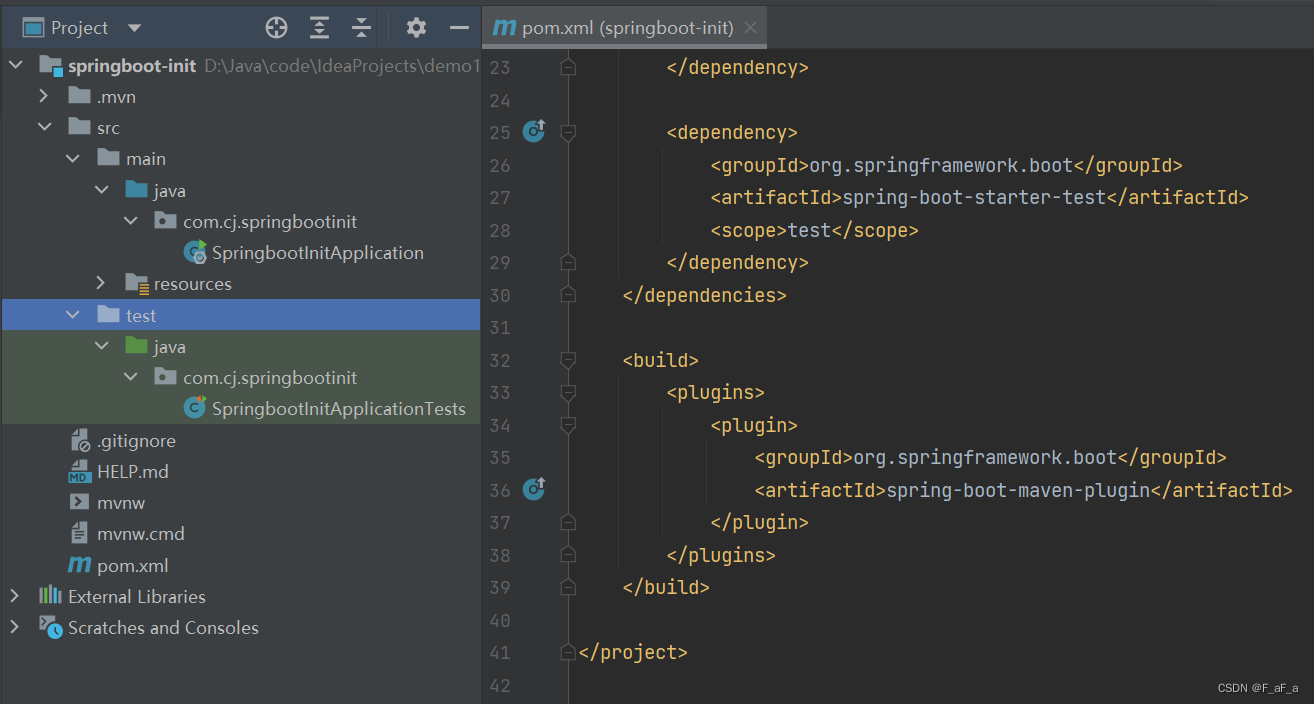
起步依赖·原理分析
spring-boot-starter-parent
spring-boot-starter-parent 中定义了各种技术的版本信息,组合了一套最优搭配的技术版本。
在各种starter中,定义了完成该功能需要的坐标集合,其中大部分版本信息来自于父工程。
我们的工程继承parent、引入starter后,通过依赖传递,就可以简单方便获得需要的jar包,并不会存在版本冲突等问题。

一直查看父工程的配置文件,最终可以看到<properties>下面定义了很多版本信息
<dependencyManagement>中的依赖都根据<properties>来确定包的版本,这就是版本锁定
spring-boot-starter-web
查看配置文件,发现这个包已经自动将一些其他的包导入进来了
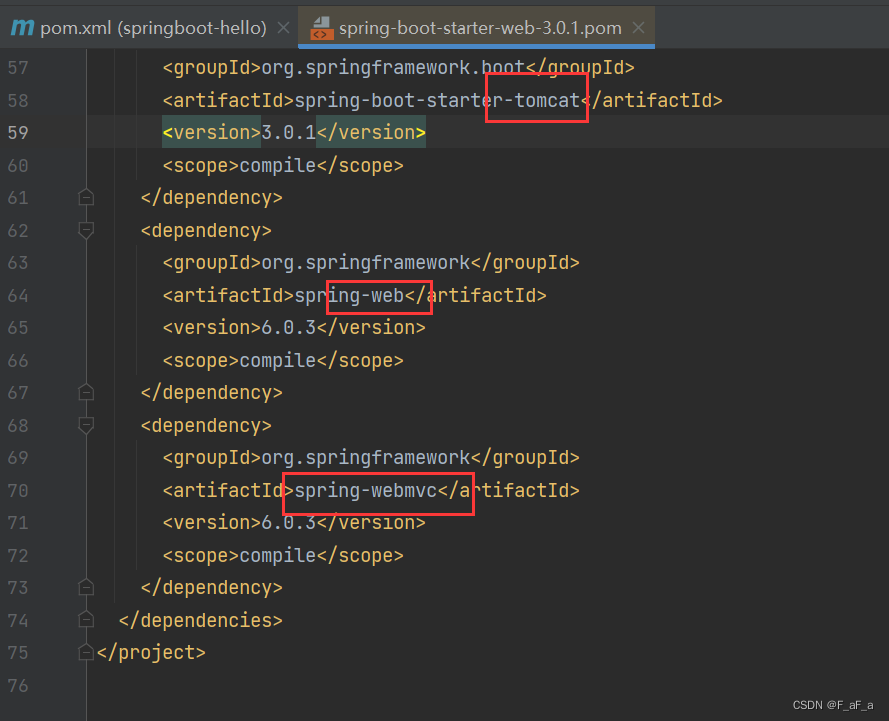
配置
默认配置文件明:application
2种配置文件明:properties和yml/yaml
springBoot是基于约定的,所以很多配置都有默认值,但如果想使用自己的配置替换默认配置的话,就可以使用application.properties或者application.yml(application.yaml)配置
- properties
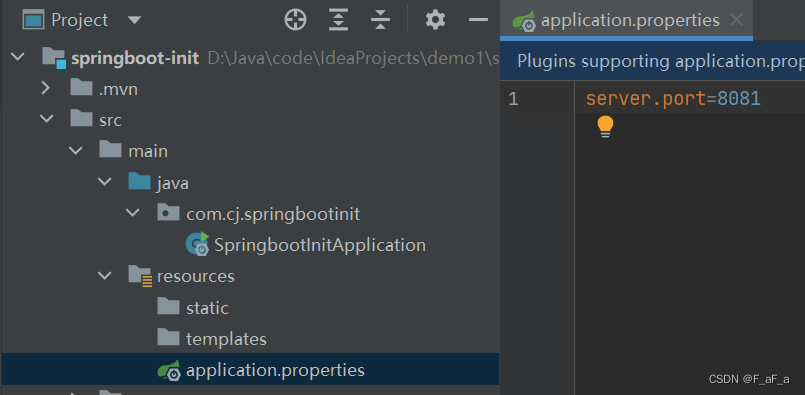
- yaml
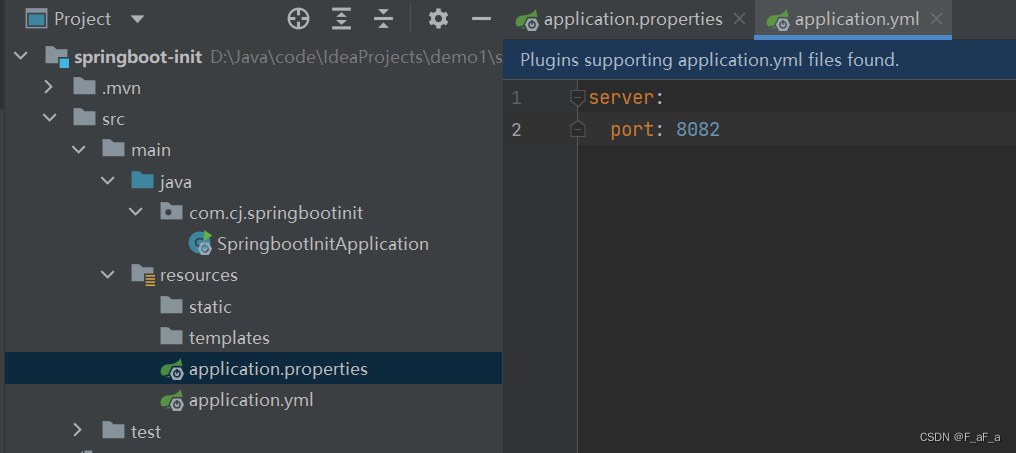
如果存在多个配置,根据优先级读取:application.properties>application.yml>application.yaml
yaml
拓展名可以使用.yml或.yaml
比较简洁,以数据为中心,
相较于xml,可以少写尾标签
相较于profile,可以看出来同一类的属性
# profile
server.port: 8081
# yaml
server:
port: 8082
# xml
<server>
<port>8083</port>
</server>
基本语法
- 大小写敏感
- 数据值前面必须有空格作为分隔符
- 用缩进表示层级关系
- 缩进不允许使用Tab键,只能用空格,不同系统Tab键的空格数不同
- 缩进的空格数目不重要,只要相同层级的元素左对齐就行
- # 表示行注释,从这个字符到行尾,都会被解析器忽略
数据格式
- 对象(map):键值对的集合
person:
name: soon
person: {name: soon} # 行内写法
- 数组:一组按次序排列的值,使用‘-’ 表示数组的每个元素
city:
- beijing
- shanghai
city: [beijing,shanghai] # 行内写法
- 纯量:单个值,不可再分
msg1: 'hello1 \n beijing' # 单引号 忽略转义字符
msg2: "hello2 \n shanghai" # 双引号 识别转义字符
- 参数引用:
${key}
读取配置
@Value获取单个值比较方便,值多了就不方便Environment@ConfigurationProperties配置和对象相护传递
@Value
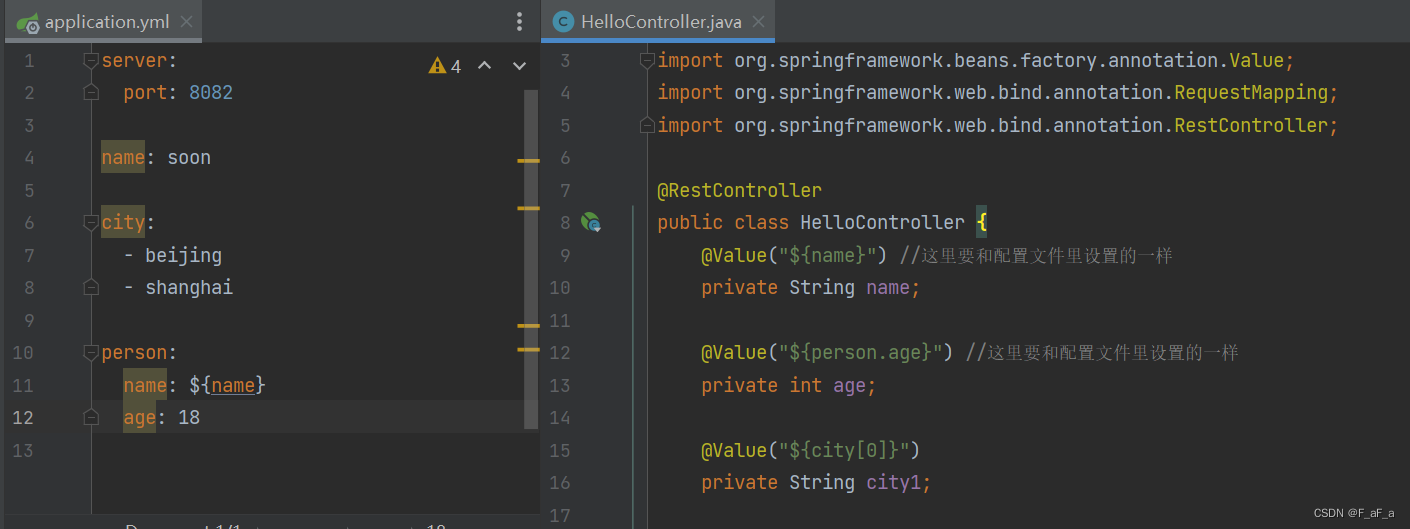
Environment.getProperty
import org.springframework.core.env.Environment;
@RestController
public class HelloController {
@Autowired
private Environment env;
@RequestMapping("/getName")
public String hello(){
System.out.println(env.getProperty("person.name"));
System.out.println(env.getProperty("city[0]"));
return env.getProperty("name");
}
}
@ConfigurationProperties
 添加注解处理器的依赖
添加注解处理器的依赖

profile
我们在开发Spring Boot应用时,通常同一套程序会被安装到不同环境,比如:开发、测试生产等。其中数据库地址、服务器端口等等配置都不同,如果每次打包时,都要修改配置文件,那么非常麻烦。
profile功能就是来进行动态配置切换的。
profile配置方式
-
多profile文件方式:提供多个配置文件,每个代表一种环境
application-dev.properties/yml开发环境application-test.properties/yml测试环境application-pro.properties/yml生产环境
-
yml多文档方式
- 在yml中使用
---分隔不同配置
- 在yml中使用
多profile文件方式
多了三个不同环境的配置:dev pro test,切换环境的时候,只用在application.properties中指定spring.profiles.active
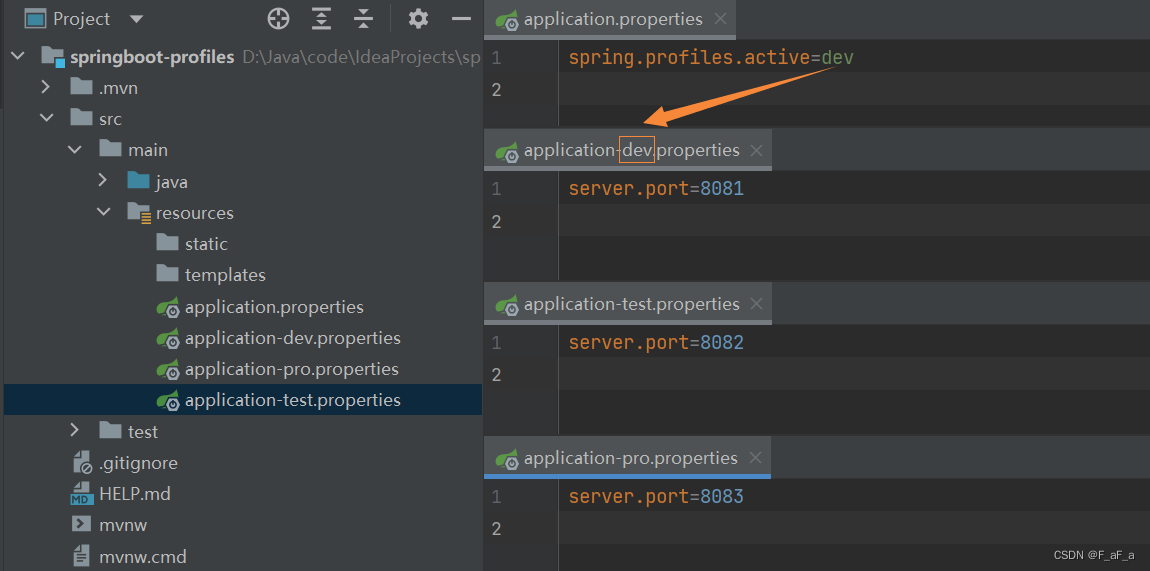 运行之后发现端口就是8081
运行之后发现端口就是8081

yml多文档方式
--- # 分割成不同部分
server:
port: 8081
spring:
config:
on-profile: dev
---
server:
port: 8082
spring:
config:
on-profile: test
---
server:
port: 8083
spring:
config:
on-profile: pro
---
spring:
profiles:
active: dev # 使用这个环境

profile激活方式
- 配置文件:在配置文件中配置:
spring.profiles.active=dev,详见多profile文件方式 - 虚拟机参数:在VM options指定:
-Dspring.profiles.active=dev - 命令行参数:
java -jar xxjar --spring.profiles.active=dev
虚拟机参数
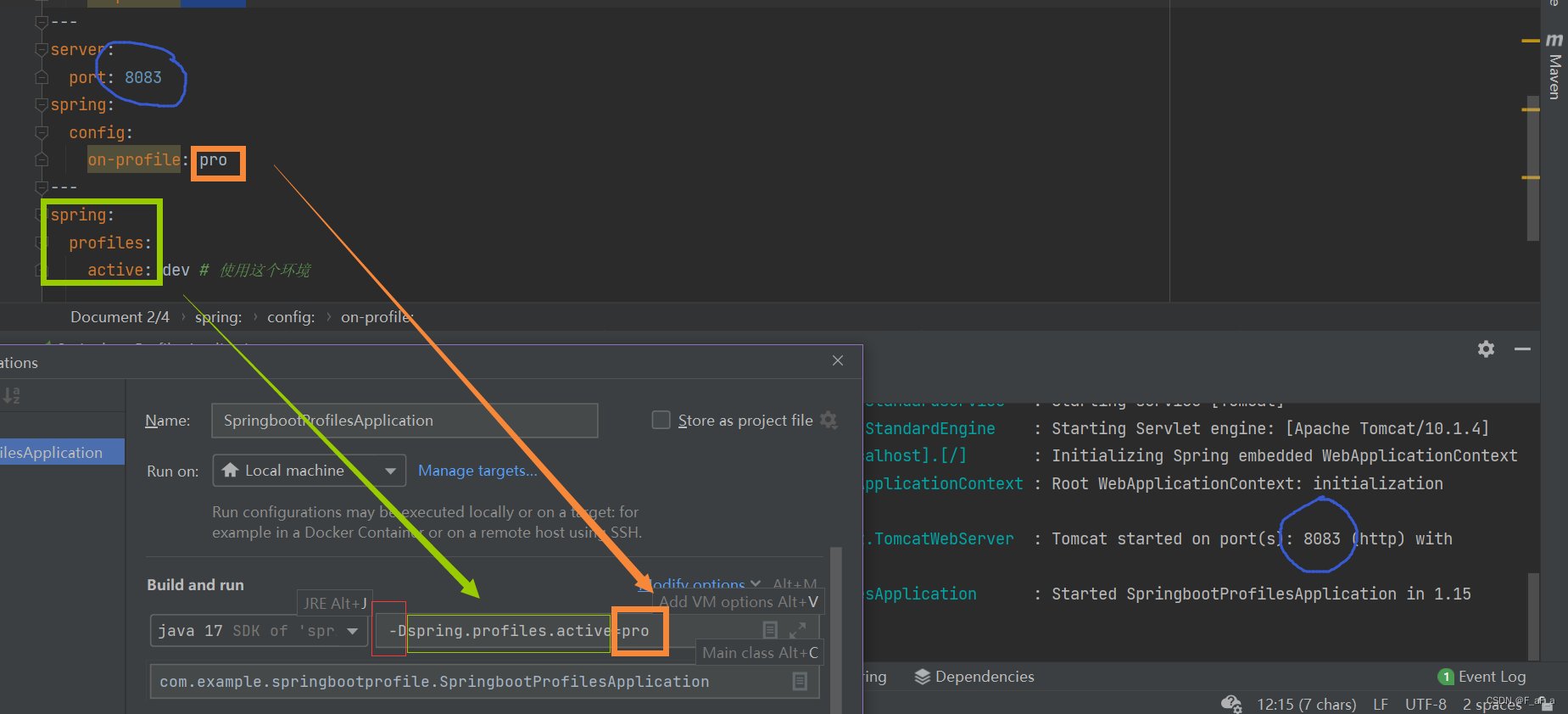
命令行参数

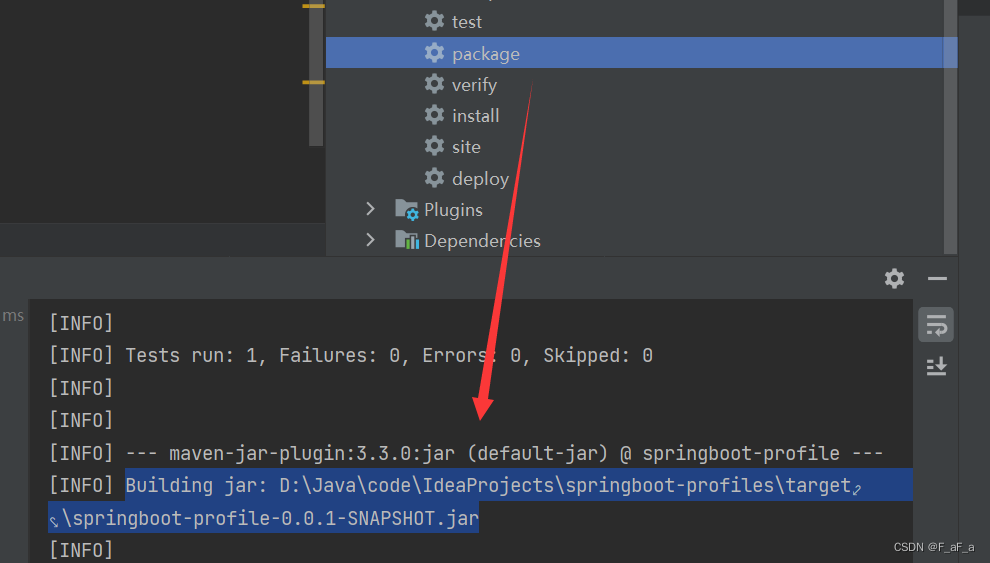
D:\Java\code\IdeaProjects\springboot-profiles\target> java -j .\springboot-profile-0.0.1-SNAPSHOT.jar --spring.profiles.active=pro

--spring.config.location=配置文件路径 使用外部配置文件
--server.port=8088 端口号改为8088
--server.servlet.context-path=/hello 修改项目的访问路径,默认为/
内部配置加载顺序
Springboot程序启动时,会从以下位置加载配置文件:
file:./config/: 当前项目下的/config目录下file:./:当前项目的根目录classpath:/config/: classpath的/config目录classpath:/: classpath的根目录
优先级由高到低
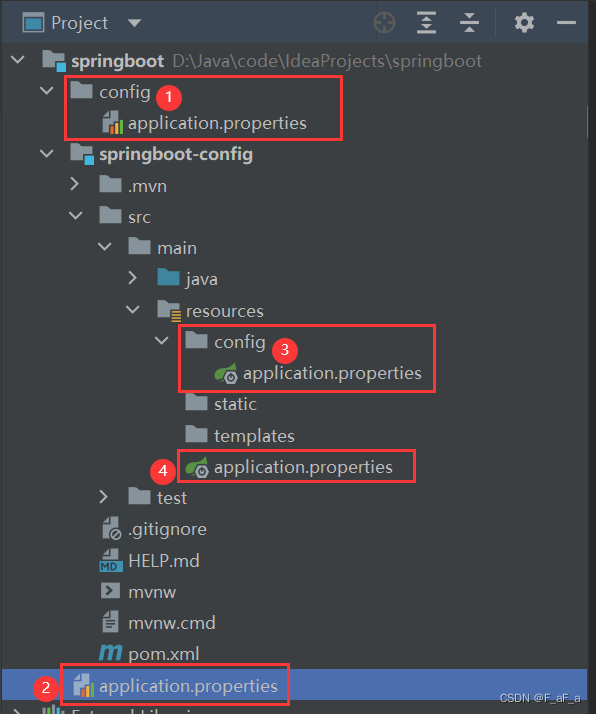
打包后,java和resources路径下的内容都会放到classpath路径下
外部配置加载顺序
通过官网查看外部属性加载顺序,后面的属性源可以覆盖前面的属性源中定义的值。
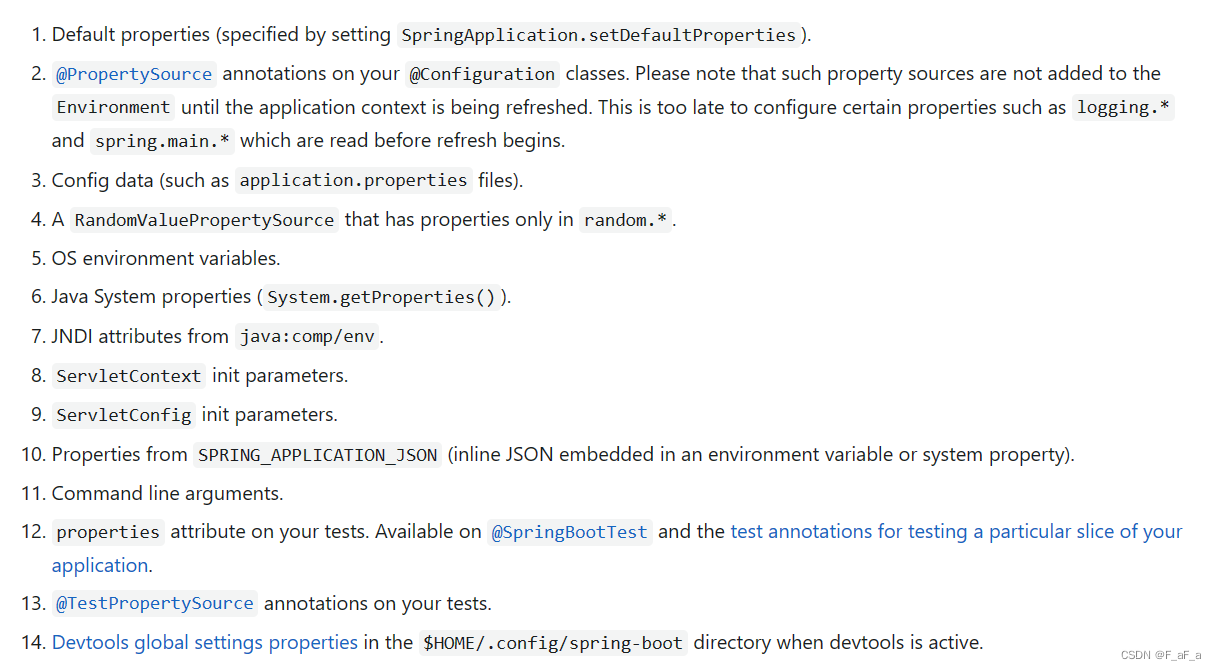
整合其他框架
Junit
SpringBoot整合Junit,步骤:
①搭建SpringBoot工程
②引入starter-test起步依赖
<dependency>
<groupId>org.springframework.boot</groupId>
<artifactId>spring-boot-starter-test</artifactId>
<scope>test</scope>
</dependency>
③编写测试类
import org.springframework.stereotype.Service;
@Service
public class UserService {
public void add(int a) {
System.out.println("添加" + a);
}
}
④添加测试相关注解
@RunWith(SpringRunner.class)@SpringBootTest(classes =启动类.class),如果这个测试类和启动了是同一个包,则可以写成@SpringBootTest
@RunWith(SpringRunner.class)
@SpringBootTest(classes = SpringbootJunitApplication.class) //main中的引导类
public class UserServiceTest {
@Autowired
private UserService userService;
@Test
public void testAdd(){
userService.add(1);
}
}
⑤编写测试方法
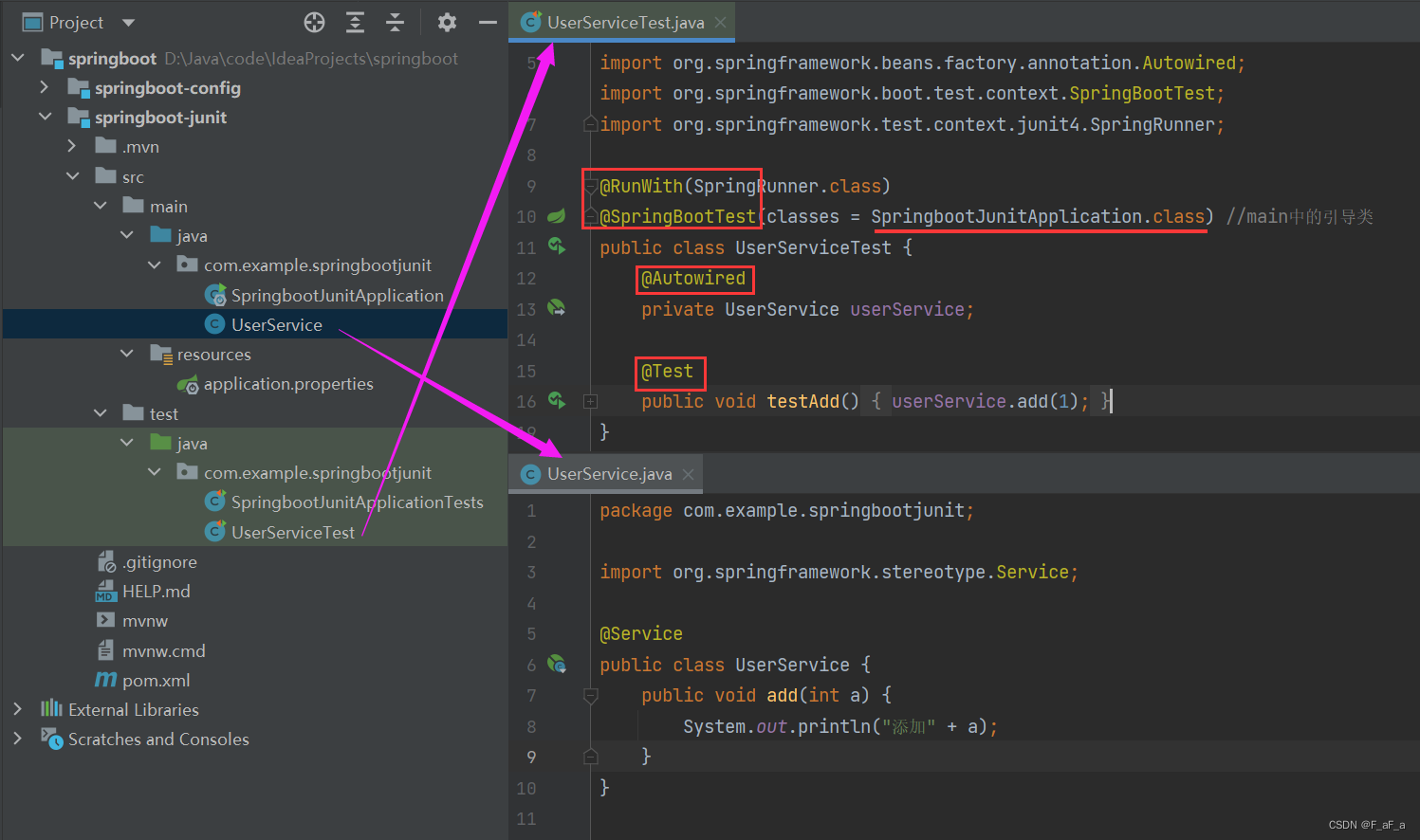
redis
SpringBoot整合redis,步骤:
①搭建SpringBoot工程
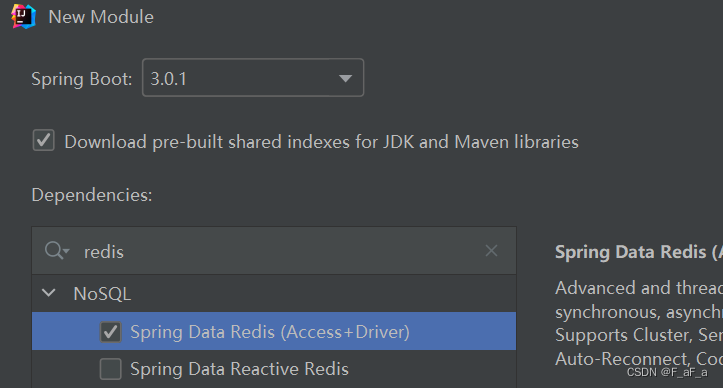
②引入redis起步依赖

③配置redis相关属性
如果不配置,就是用本机的;可以在配置文件中配置
spring:
data:
redis:
host: 127.0.0.1 # redis的主机ip
port: 6379
④在测试类中注入RedisTemplate模板
@Autowired
private RedisTemplate redisTemplate;
⑤编写测试方法,测试
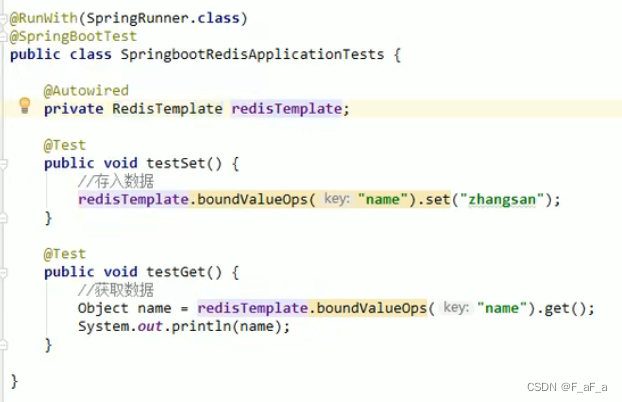
mybatis
SpringBoot整合mybatis,步骤:
①搭建SpringBoot工程
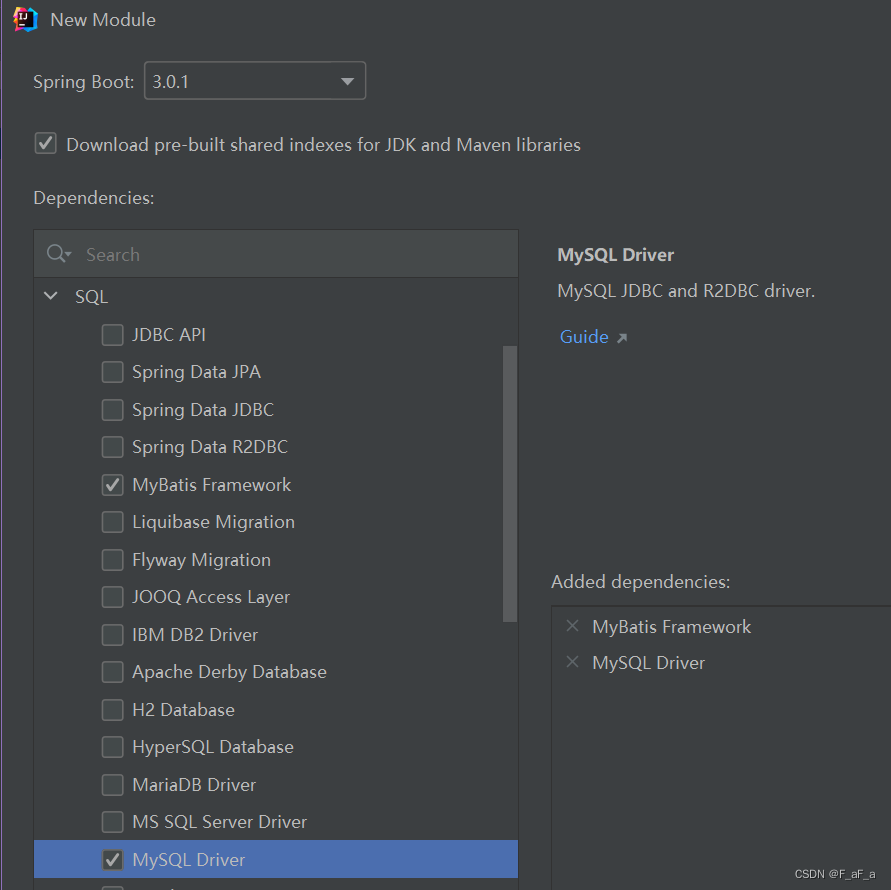
②引入mybatis起步依赖,添加mysq|驱动
<dependency>
<groupId>org.mybatis.spring.boot</groupId>
<artifactId>mybatis-spring-boot-starter</artifactId>
<version>3.0.0</version>
</dependency>
<dependency>
<groupId>com.mysql</groupId>
<artifactId>mysql-connector-j</artifactId>
<scope>runtime</scope>
</dependency>
③编写DataSource和MyBatis相关配置
spring:
datasource:
url: jdbc:mysql:///springboot
username: root
password: 123456
driver-class-name: com.mysql.cj.jdbc.Driver
④定义表和实体类
create table t_user
(
id int auto_increment
primary key,
username varchar(32) collate utf8mb4_unicode_ci null,
password varchar(32) collate utf8mb4_unicode_ci null
);
public class User {
Integer id;
String name;
String password;
//生产toString get set 方法
}
⑤编写sql
@Mapper
public interface UserMapper {
@Select("select * from t_user")
public List<User> findAll();
}
⑥测试
@RunWith(SpringRunner.class)
@SpringBootTest
class MybatisApplicationTests {
@Autowired
private UserMapper userMapper;
@Test
void contextLoads() {
List<User> all = userMapper.findAll();
for (User user : all) {
System.out.println(user);
}
}
}
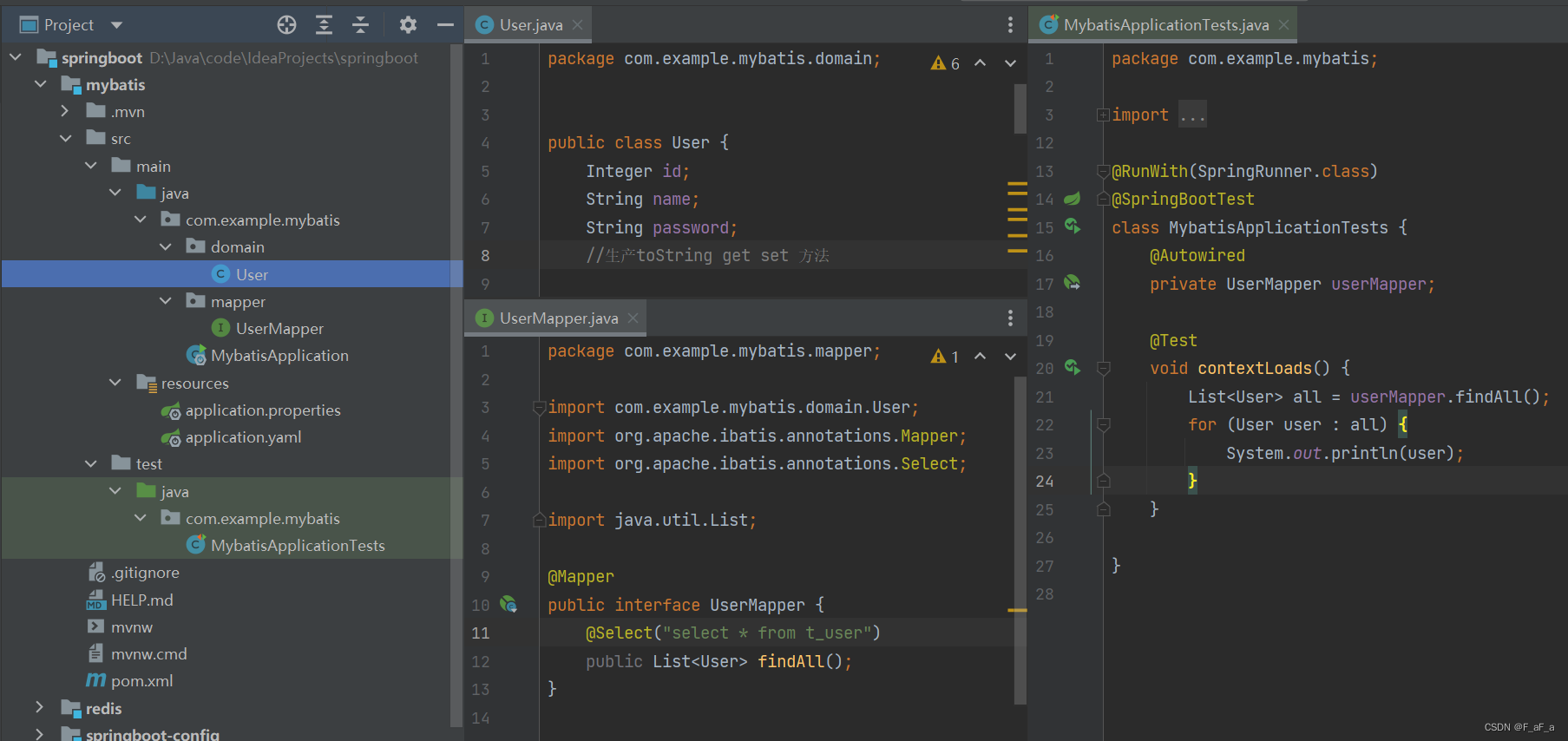
也可用xml写sql语句
spring:
datasource:
url: jdbc:mysql:///springboot
username: root
password: 123456
driver-class-name: com.mysql.cj.jdbc.Driver
# mybatis
mybatis:
mapper-locations: classpath:Mapper/*Mapper.xml # mapper映射文件路径
type-aliases-package: com.example.mybatis.domain # 实体类所在的包,这样resultType就可以不写包名,直接写类名就行
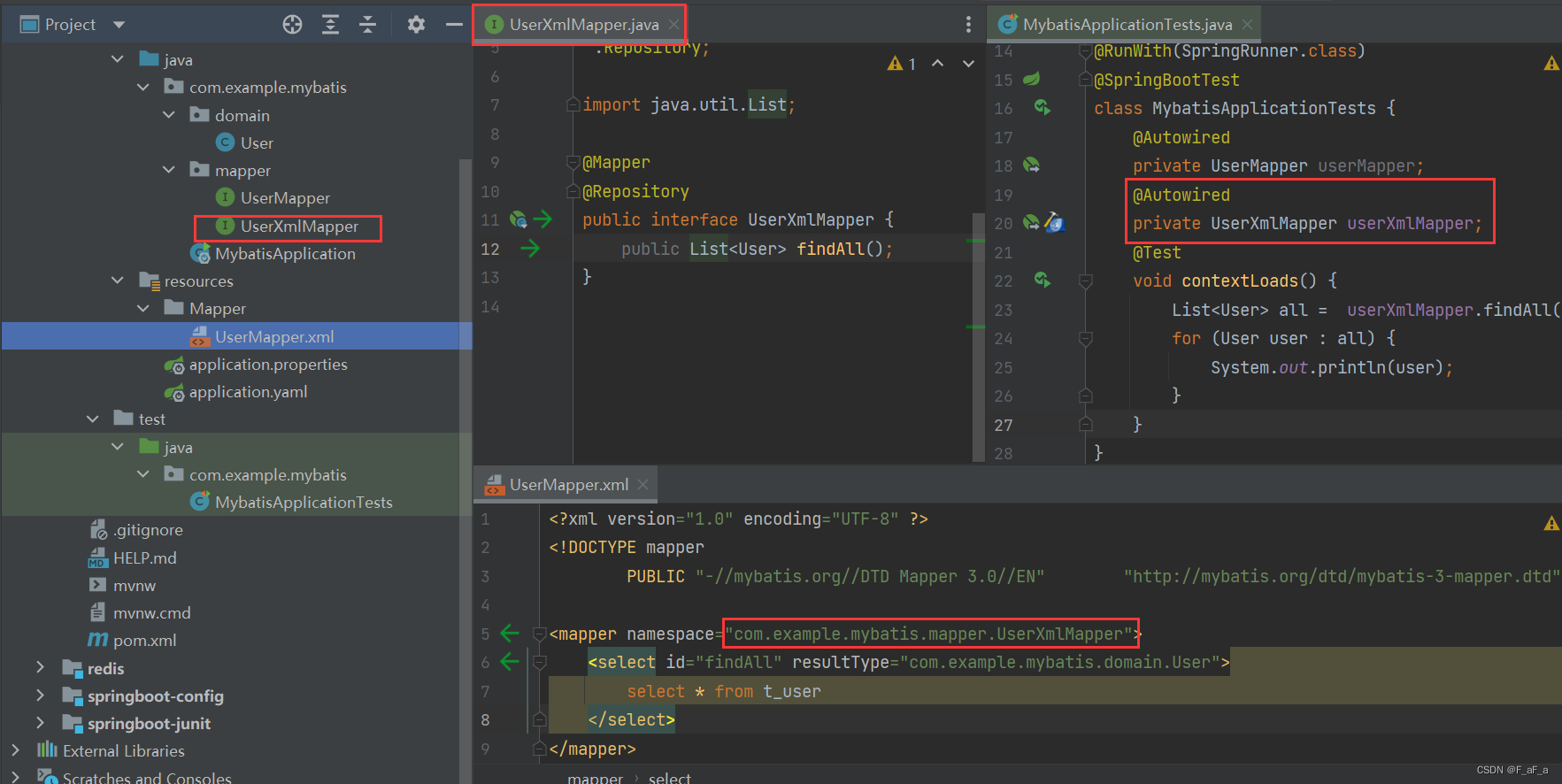
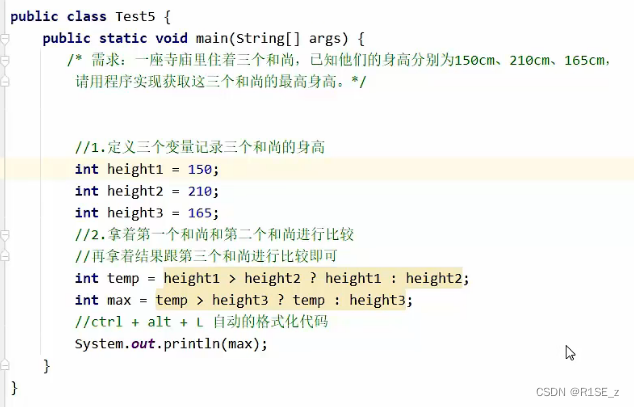

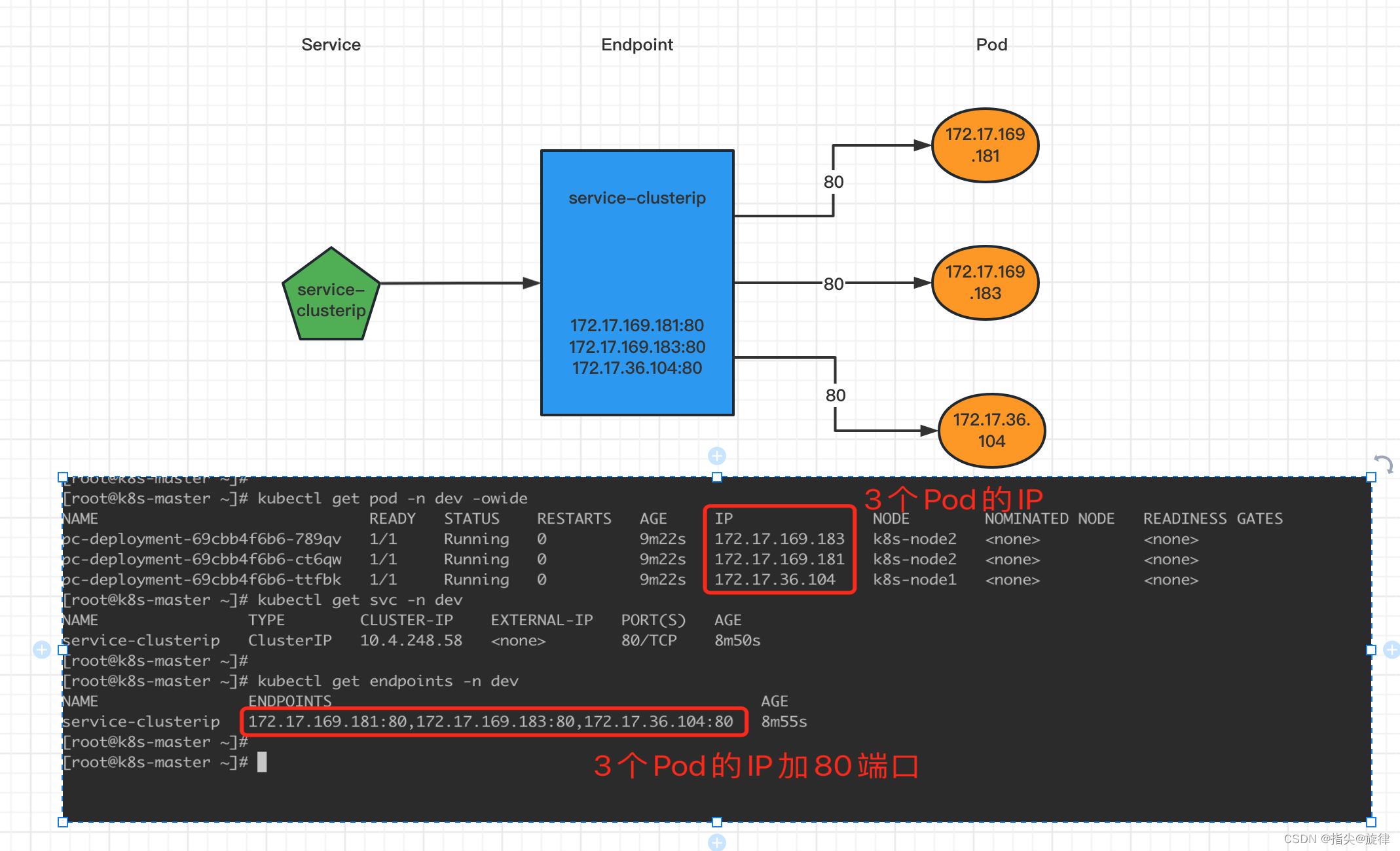
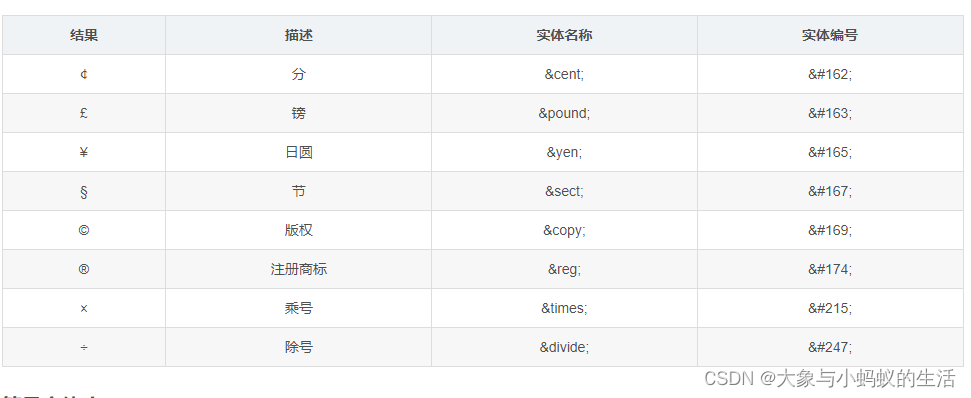
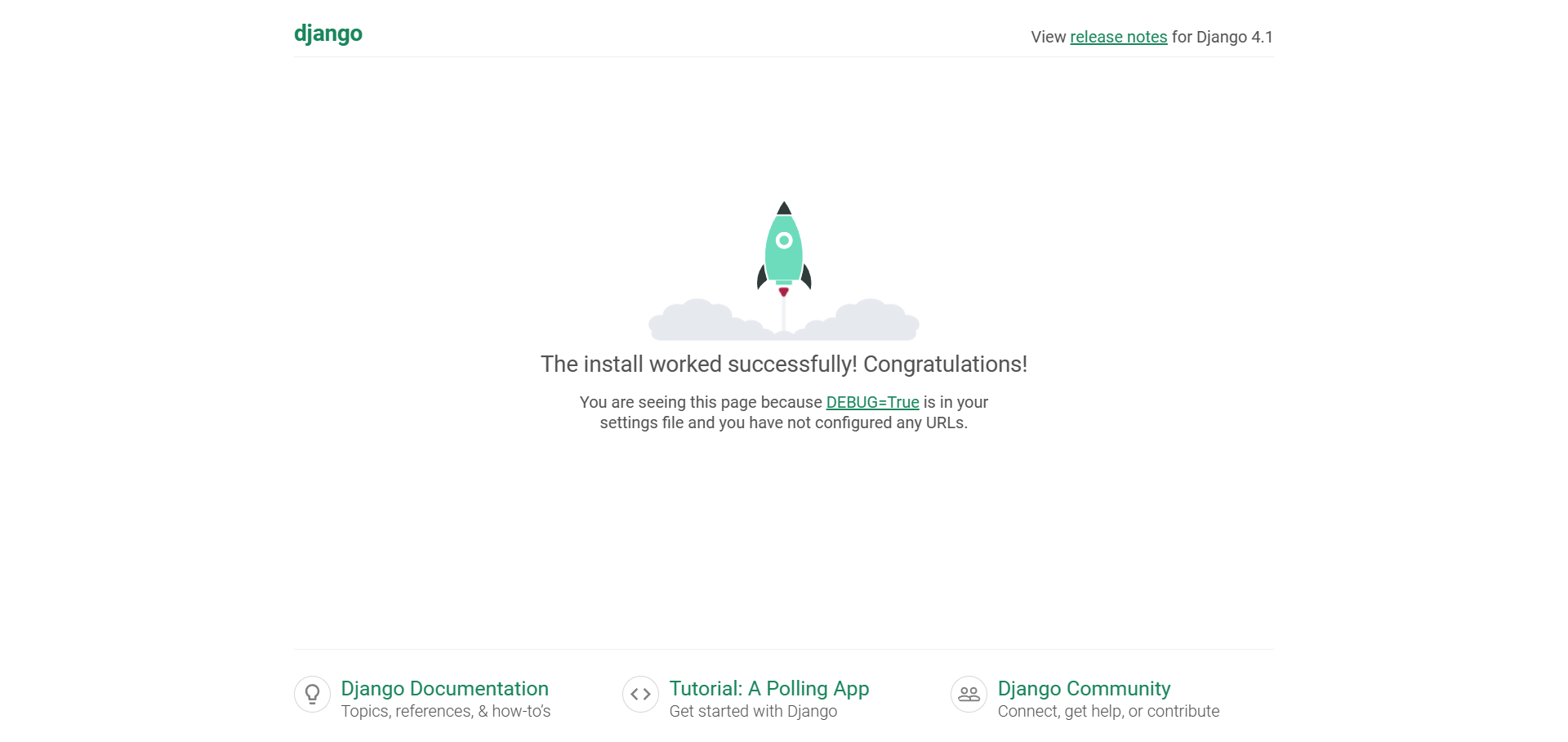



![[前端笔记——多媒体与嵌入] 6.HTML 中的图片+视频+音频内容](https://img-blog.csdnimg.cn/c73f87cb32184953a037aed343ce86d2.png)


![[ 华为云 ] 云计算中Region、VPC、AZ 是什么,他们又是什么关系,应该如何抉择](https://img-blog.csdnimg.cn/03464fd9653e40428be191d8d7eaca9f.png)

